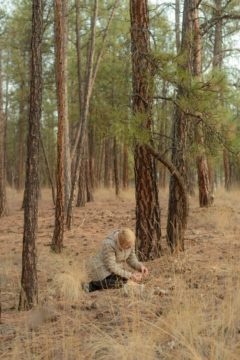Gabriel Popkin in The New York Times:
 Justine Karst, a mycologist at the University of Alberta, feared things had gone too far when her son got home from eighth grade and told her he had learned that trees could talk to each other through underground networks. Her colleague, Jason Hoeksema of the University of Mississippi, had a similar feeling when watching an episode of “Ted Lasso” in which one soccer coach told another that trees in a forest cooperated rather than competed for resources.
Justine Karst, a mycologist at the University of Alberta, feared things had gone too far when her son got home from eighth grade and told her he had learned that trees could talk to each other through underground networks. Her colleague, Jason Hoeksema of the University of Mississippi, had a similar feeling when watching an episode of “Ted Lasso” in which one soccer coach told another that trees in a forest cooperated rather than competed for resources.
Few recent scientific discoveries have captured the public’s imagination quite like the wood-wide web — a wispy network of fungal filaments hypothesized to shuttle nutrients and information through the soil and to help forests thrive. The idea sprouted in the late 1990s from studies showing that sugars and nutrients can flow underground between trees. In a few forests, researchers have traced fungi from the roots of one tree to those of others, suggesting that mycelial threads could be providing conduits between trees. These findings have challenged the conventional view of forests as a mere population of trees: Trees and fungi are, in fact, coequal players on the ecological stage, scientists say. Without both, forests as we know them wouldn’t exist.
More here.
